
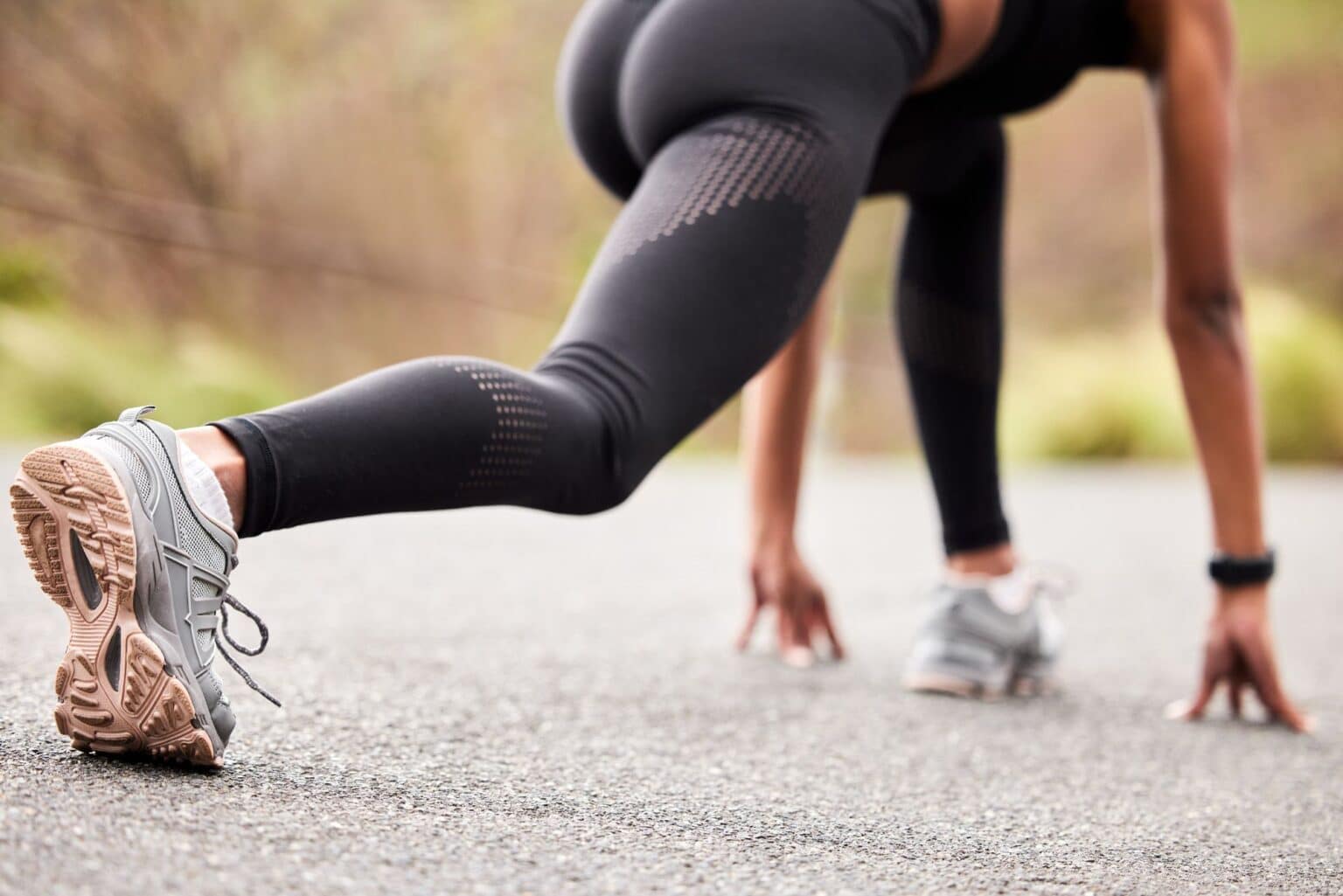
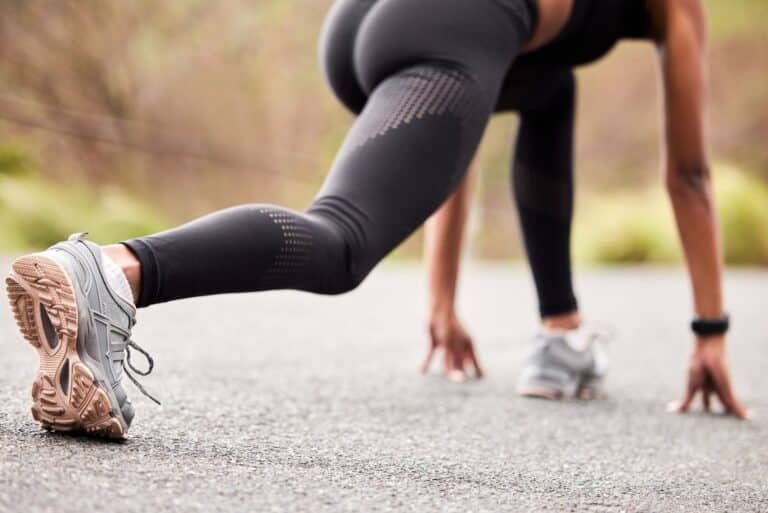
Warm-up exercises are essential to prepare your body for a run. These exercises help increase blood flow, loosen muscles and joints, as well as improve range of motion. By warming up before a run, you can prevent injuries and perform at your best. In this article, we will discuss how to warm up before a run for maximum performance.
Before we dive into the best ways to warm up before a run, let us first understand why it is important to do so. Running is a high-impact activity that puts stress on your muscles and joints. Without proper preparation, this stress can lead to injuries such as strains, sprains, or even fractures. A proper warm-up is essential to prevent these injuries and enhance running performance.
Warming up helps prepare your body for the physical demands of running by gradually increasing blood flow and heart rate. This allows your muscles to receive more oxygen and nutrients, helping them perform better and reducing the risk of injury.
Moreover, warming up also prepares you mentally for your run. It gives you time to focus on your breathing and form, enhancing your mind-muscle connection and setting you up for a successful run.
Now that we understand the importance of warming up, let’s explore the best ways to do it. Here are some exercises you can incorporate into your warm-up routine: Incorporating dynamic stretching into your pre-run routine can significantly enhance workout performance.
Start with a light jog or brisk walk for about 5-10 minutes. This will gradually increase your heart rate and loosen up your muscles.

Dynamic stretches involve moving your body through a full range of motion, which helps improve mobility and flexibility. Some examples of dynamic stretches include leg swings, arm circles, high knees, and lunges. The reverse lunge with overhead reach is another effective dynamic stretch that engages multiple muscle groups.
Why not try this Pilates for Runners Pre-Warm-Up video? Led by Liz, this session is designed to loosen your hips, activate your calves, and prepare your body to maximise your performance. Best of all, no equipment is required!
Using a foam roller before a run can help release tension and knots in your muscles, improving blood flow and range of motion. Target areas such as your calves, quads, and hamstrings for maximum benefits.
Check out this Pilates for Runners video: Runners Rest and Recovery – Relaxing with a Roller. This live, mat-based session is designed for all skill levels and focuses on using a roller to promote blood flow and relaxation, helping you recover more effectively after training.
Strides or accelerations are short bursts of high-intensity running that gradually build up speed. These can help activate fast-twitch muscle fibres and improve neuromuscular coordination, which is essential for faster and more efficient running.

Activation exercises involve targeting specific muscles to wake them up and prepare them for the demands of running. Some examples include glute bridges, leg extensions, and squats.
This Pilates for Runners-Pre Run Warm Up video is a great resource for activation exercises. It focuses on engaging your core and activating your glutes, hamstrings, and quads to help you run with greater power and efficiency.
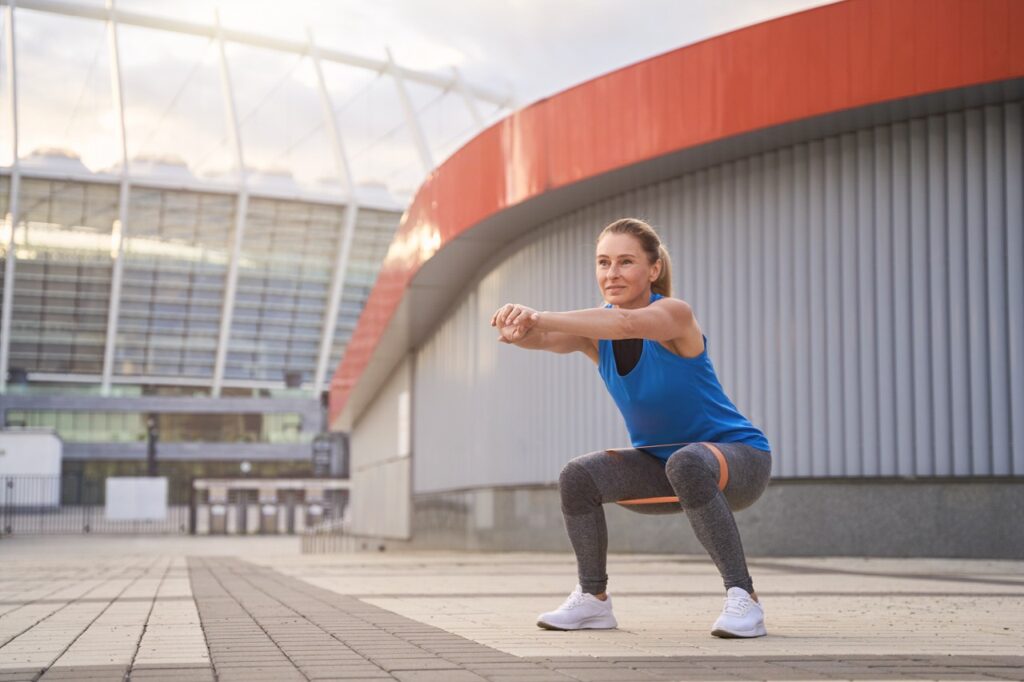
A quick, focused, pre-run routine offers numerous benefits. It boosts blood flow to your muscles, improves flexibility and range of motion in your muscles, tendons, and ligaments, and helps lower the risk of injury. By alleviating muscle tension and tightness, it also promotes better muscle function and enhances performance.
Beyond the physical advantages, pre-run stretches can help you mentally transition from a busy or stressful day, setting the stage for a more enjoyable and rewarding run.
It is worth noting the difference between dynamic warm-up and static stretching. While both have their benefits, they serve different purposes. Dynamic warm-up involves moving your body through a full range of motion to prepare for physical activity, and a running warm-up is essential in preparing the body for a run by targeting various muscle groups, increasing body temperature, enhancing flexibility, and reducing the risk of injury. Static stretching involves holding a stretch in one position for an extended period.
Dynamic warm-ups are better suited before running as they help activate muscles and increase blood flow, making them more pliable and less prone to injury. On the other hand, static stretches are best saved for after runs or as part of a cool-down routine to help with muscle recovery.
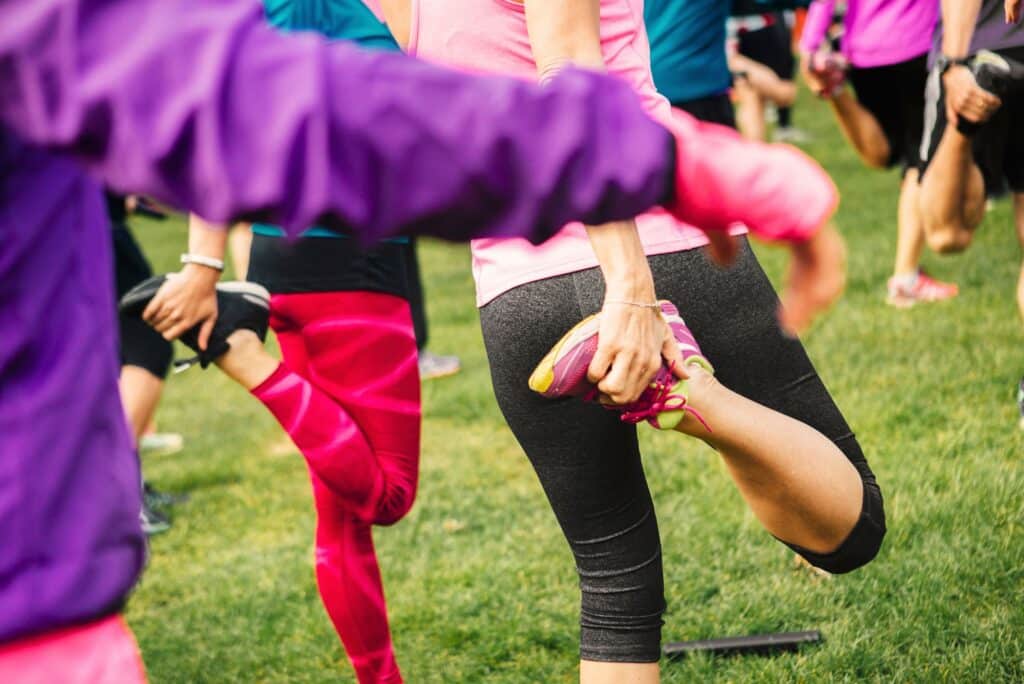
The type of warm-up exercises you do can vary depending on the type of running you are planning to do. For example, if you are going for a long-distance run, your warm-up routine may include more dynamic stretches and activation exercises. If you are doing speed or interval training, incorporating strides or accelerations would be beneficial.
For trail running, it is essential to include balance and stability exercises in your warm-up routine to prepare your body for uneven terrain. These can include single-leg balances, lateral lunges, and single-leg squats. These exercises can improve running performance by enhancing muscle stability and preventing injuries.
Here are a few warm-up exercises you can do before any type of run:
Stand facing a wall or hold onto a sturdy object for support. Keep your feet shoulder-width apart to maintain balance and stability during leg swings. Swing one leg back and forth, increasing the range of motion with each swing. Repeat on the other leg.
Next, bring your knee up towards your chest while standing on one leg. Open your hip out to the side before lowering it back down. Repeat on the other leg.
A proper lower body warm-up is crucial for getting your legs ready for the run ahead. This part of your warm-up routine should focus on activating and loosening the muscles in your legs, hips, and glutes.
Lunges and other exercises
Start with basic lunges, stepping forward or backward and alternating legs. To perform a lunge with the left leg, step forward with your left leg, ensuring your knee is aligned with your ankle, and maintain balance and coordination throughout the movement. You can also incorporate other movements such as side lunges, curtsy lunges, or squats to target different muscle groups in your lower body.
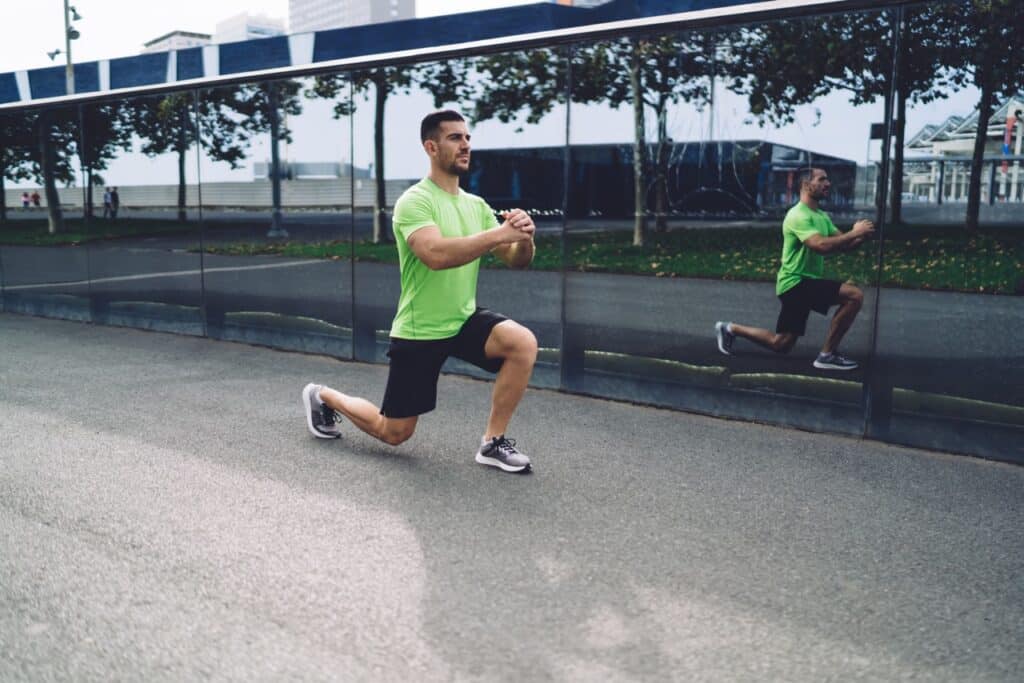
In this short Pilates for Runners video: Maximise Your Lunges, Liz demonstrates the proper technique for performing lunges—a must-have exercise for runners. Whether you’re doing weighted, walking, reverse, or static lunges, they’re all fantastic for building strength.
Liz’s expert tip will help you maximise glute activation, hip stability, and single-leg strength, enhancing your running form and endurance.
Warming up is a crucial part of any runner’s routine, but it’s important to listen to your body and tailor your warm-up to suit your needs. An effective warm-up should incorporate dynamic stretches, like leg swings and lunges, to loosen up muscles and joints for the run ahead. Adding light cardio, such as jogging, cycling, or using an elliptical, helps elevate your heart rate and prepare your body for physical activity. The duration of your warm-up should align with the intensity of your workout and your personal fitness goals, ensuring you’re fully prepared to perform at your best.
Begin your warm-up at a gentle pace, gradually increasing intensity as you progress. Prioritise activating key muscle groups like your glutes and core to enhance stability and promote an efficient running form. Stand tall with feet shoulder-width apart to maintain proper posture during warm-up exercises. Include dynamic exercises that simulate running movements, such as high knees or butt kicks. Stay attuned to your body, noting any tightness or discomfort. If something feels off, take a moment to stretch or adjust before moving forward. A thoughtful warm-up sets the stage for a better, safer run.
As a runner, it’s critical to maintain balance and symmetry in your body. Many runners tend to be more dominant on one side, leading to muscle imbalances and potential injuries. Incorporate exercises that target single-leg strength and stability in your warm-up routine, such as single-leg balances or lunges.
It’s also essential to switch legs when performing any exercise to ensure both sides of the body are equally prepared for the run ahead. This will not only help prevent injury but also improve overall performance by promoting better coordination and efficiency.
When stretching, make sure to keep your legs as straight as possible without locking your knees. Straightening your leg helps target the hamstring muscles more effectively and can prevent strain or injury. Additionally, focus on using proper form during exercises like lunges or squats—keeping your knee in line with your ankle and not letting it extend beyond your toes.
While warming up is essential, it’s easy to make mistakes that can hinder your performance or lead to injury. Some common mistakes include:
Warming up before a run is vital for your overall performance and safety and helps prepare your body for the physical demands of running.

Incorporating a warm-up routine into your running regimen is crucial for injury prevention and enhancing your performance. By taking the time to properly prepare your body with dynamic stretches, exercises targeting specific muscle groups, and proper form, you are setting yourself up for success on every run.
Why not try incorporating a Pilates for Runners ‘Pre-Run Warm-up video into your routine? These targeted workouts can help improve your hip strength, stability, and single-leg balance while also activating key muscles needed for efficient running form. With various options available online, you can find a video that suits your needs and goals.
Remember to listen to your body during the warm-up process and make adjustments as necessary. Prioritising balance and symmetry, proper form, and gradually increasing intensity will set you up for a successful run.
Don’t skip out on your warm-up; it’s an essential part of your training process. Happy running!
Join our mailing list to stay up to date with the latest UK running events, training tips, and exclusive offers on running products. Rest assured, we value your privacy and would never dream of selling your address. Sign up now…
Share this article
I’ve come across advice saying to use this formula for Heart Rate low intensity training https://philmaffetone.com/180-formula/ ,...
Running is a great way to stay fit and healthy, but it can also be...
I completed the London Marathon, an incredible experience I’ll never forget. However, I can’t help...
For many people, running is seen as a way to improve physical health, lose weight...
Running is one of the most common forms of exercise and physical activity. It requires...
Are you struggling with IT band pain as a runner? You’re not alone. This guide...
We’re here to make sure you’re up-to-date with the latest running tips, events and product discounts – we’ve always got your back! Rest assured, we value your privacy and would never dream of selling your address.
BONUS: Sign up today and receive a FREE code for our Sub-4-Hour Marathon Plan